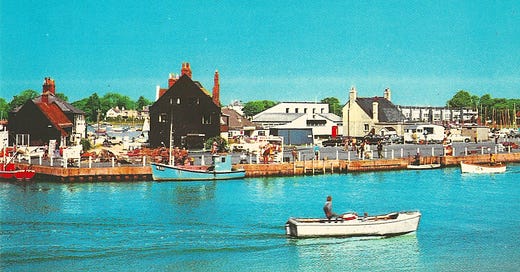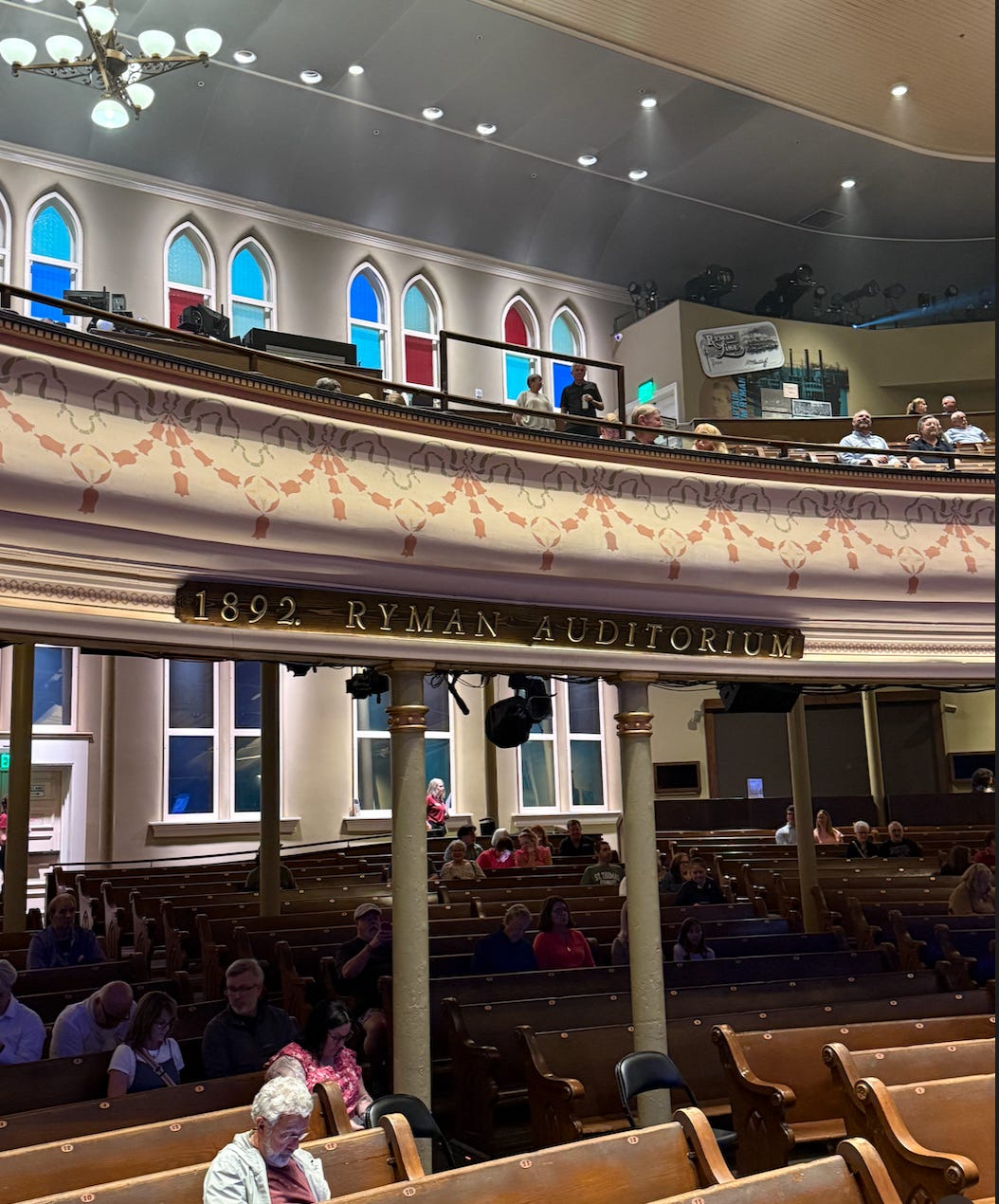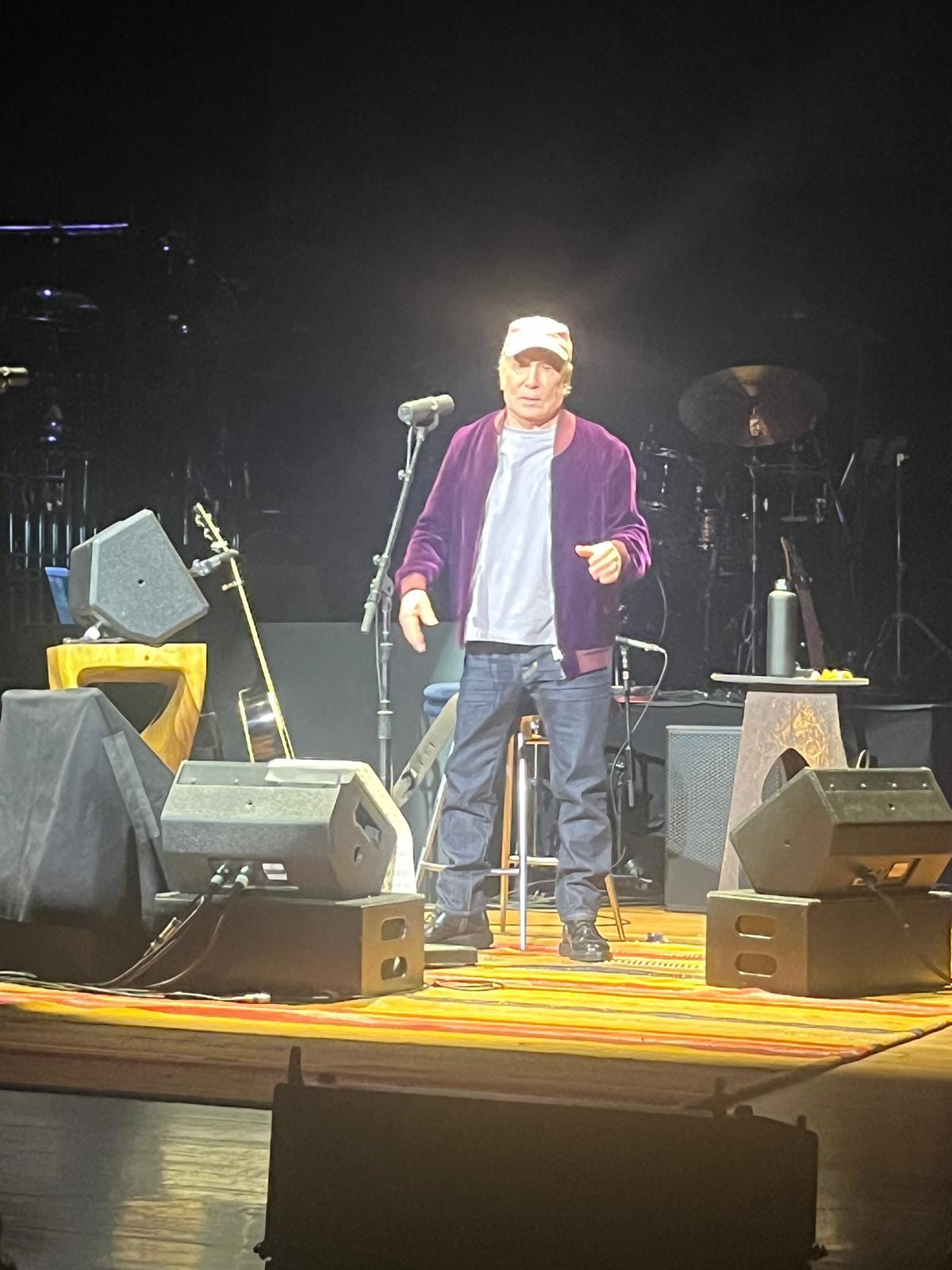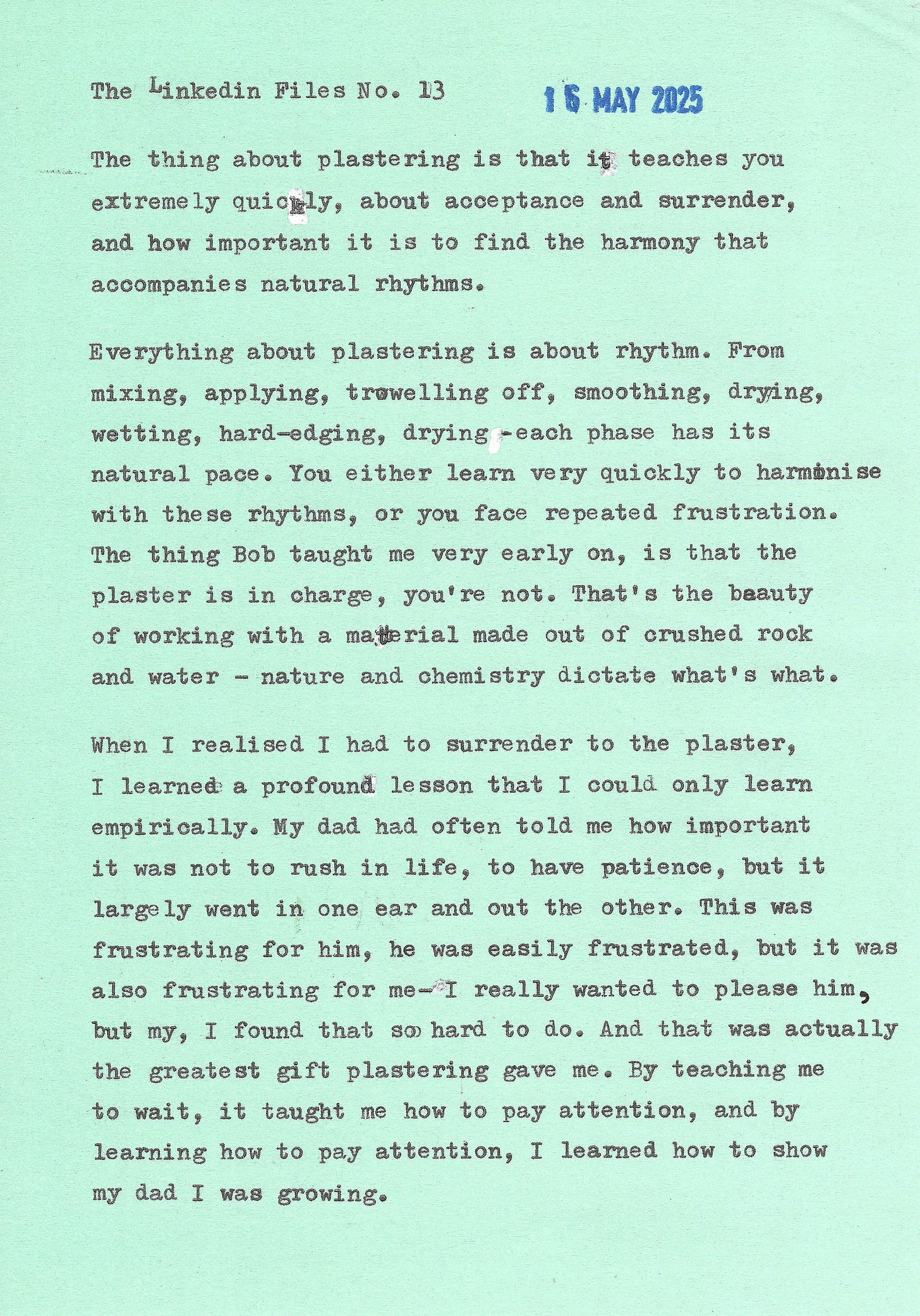Nostalgia
I got myself into a bit of a ranty mood on Linkedin recently. I should know better by now, but I read something to do with how everything new and shiny is great, and everything old, worn, and analogue, is tired and should be eschewed. It was that style of writing that is extremely binary, you know the sort - here’s your seven steps to a wonderful future if you just follow my data first, ai driven, algorithm rules OK process. It was a piece completely devoid of any sense that real life and the human condition are characterised by fleshy uncertainty, and that most everything we do (or should do) is context dependant, and could well need to be different from one day to the next.
It made me remember something the great Severiano Ballesteros said about the golf swing back in the 1980’s when I was learning to play. Running completely counter to the prevailing teaching wisdom of the day, Seve said the ball position in the stance shouldn’t necessarily be consistent, even for the same club, from one day to the next. His reasoning was that one day he will wake up feeling like he could swing fast and loose and easily, and the next, his swing would be a struggle – he would be stiff and therefore tight. So he built his game around feel, and an intuitive sense that imperfection was something to be harnessed not rejected. On a good day he would swing fast and get to the ball more easily, therefore it could be a little further forward in his stance. On a stiff day he needed the ball back a little so he could find it earlier. He was intuitive, an artist who had learned to play bunker shots on the beach with an old 3 iron. For any non-golfers that’s like being able to grow lush vegetables out of crushed concrete waste. Seve was a maverick, and his incredible results speak for themselves.
Anyway, the thing I read made me want to say something about nostalgia, because nostalgia continually gets a bad rap and I’m not too happy about it. I’ve been thinking a lot about the valuable lessons from our community elders that we routinely choose to ignore or forget. I’m on a bit of a mission to bring them to the fore - I’ve got this idea of a vibrant community that celebrates what I call the Wisdom of The Nonnas. It’s a way of paying homage to my Nonna, who I don’t remember, but whose multiple teachings got passed down to me and my sister, by my dad, and since he’s been gone, are still being passed down by my 86 years and 11 months old, mum.
Nostalgia isn’t about living in the past. It’s not, as it’s too often dismissively accused of being, mere sentimentality. Rather it’s a powerful reclamation of the spiritual journey we’ve been on. Whether that journey has been through a life well-lived or a life of too much suffering, a life characterised by Hamlet’s slings and arrows of outrageous fortune, nostalgia walks beside us, reminding us who we once were, and respecting our deepest yearning to feel as we once felt.
Here’s the thing - when we embrace nostalgia, it orients us in this chaotic world, reminding us where we’ve come from and who we truly are. The Greeks understood this when they designed the word to embody that tender but painful ache for home - “nostos” - the return journey, "algos" - the sweet pain of remembrance.
In gentle moments, nostalgia arrives like evening light through old wooden windows, that sacred longing to come home, not so much to a place perhaps, but rather to our real selves. Our real selves in all their complex multitudes.
Nostalgia is the soul's compass, bathing our memories in amber warmth, preserving what matters most. It’s childhood lullabies, eating sprats on my mum’s lap, Mary, Mungo and Midge, green cotton parkas with fake fur collars. It’s spangles, pacers and sherbet fountains. It’s Mrs Drabble, summertime stories at Hayes Primary under the old oak tree, buying my first record from Woolies with a pound note of pocket money (Showaddywaddy’s Under the Moon of Love!).
Nostalgia reminds us we are never truly lost. When we close our eyes and find ourselves beside childhood streams, or eating warm boiled potatoes and green salad in Granny’s kitchen, we discover not just what was, but what remains eternal within us. A little part of me will always be in Christchurch. Endless summers on Friars Cliff beach at 8am with mum and Aldo and Gina, tea with the retired folk in their beach huts, style icons with floral swimming hats. Sailing and rowing down the river with Suzy and Sara, watching mullet jump at two rivers meet as the sun sets over the Priory. Crabbing at Mudeford as the other kids played on the Spit and the boats fly through the race to the Solent and the Needles beyond. It’s why I unashamedly bought the little postcard memory posted above, a few weeks ago. Look at that gorgeously Kodachrome saturated 1970’s colour, all gaudy and bright but deliciously rich in meaning.
Pilgrimage
Which brings me onto pilgrimage. There are moments in life when a journey becomes something much more profound than travel. We might call it pilgrimage then, not merely in the religious sense, but in a deeper, more personal sense – a journey of seeking, of confirmation.
I was three weeks short of my 9th birthday when Elvis died on August 16th 1977. I helped an older friend with his paper-round on the Sunday after, and if my memory serves me right every front page led with the headline The King is Dead or something similar. I was so upset. My brother Aldo and I had watched all of his films in the preceding few summers. I’m sure they came on after Why Don’t You and The Banana Splits. They were great. Mum says Elvis couldn’t act but so what. The voice mum, the songs, the hips, the face. What a beautiful human being. Elvis was my way into music. From rock and roll to everything that followed it, and afterwards to the blues and everything that preceded it. So, God willing, it was only a matter of time before I paid homage, and thank you to my travelling companion Mark, for concocting such a wonderful trip.
We went to Graceland, we went to Sun Studio. The hairs on the back of my neck didn’t settle down for a day or two. And the thing that struck me most, the thing that I’ll never forget, is the modesty of Graceland, the simplicity and honesty of Sun where it all began, and the deeply rooted passion for creativity that everyone involved in making rock and roll records in Memphis had back in the mid 1950’s.
What a time. July 1954, 706 Union Avenue, Memphis. Scotty Moore on guitar, Bill Black slapping at his stand up double-bass rooted in its groove in the tiled floor, and a 19-year-old Elvis, on his black check mark, too shy to face the boss, turns away from the glazed recording booth to sing, as Sam Philips lays down That’s All Right (Mama) and a star is born.
Carl Perkins singing the original Blue Suede Shoes, later The Killer, Jerry Lee Lewis, hammering at the piano and stubbing out cigars on his least favourite keys. Johnny Cash strumming guitar and growling that beautiful growl.
We drove from Memphis to Nashville. The American road trip. Quiet roads and church after church after church. The Tennessee countryside lush like home. Nashville is other wordly. To this music fan it felt like the Vatican and Jerusalem and Mecca all rolled into one. We listened and we listened and we listened. You need serious chops to survive as a musician in Nashville. I expected to see murals of magnificent Dolly and hear wonderful covers of Take Me Home Country Roads and Walk The Line, and hear Tammy and Taylor tributes, but I didn’t expect to hear epic covers of Radiohead’s Creep, Tears For Fears’ Everybody Wants to Rule The World, and Prince’s Purple Rain.
And then on Sunday evening we did go to church. We went to the church of the hopelessly addicted music lover and had an unforgettably nostalgic experience listening to the 83-year-old Paul Simon blow our minds. On the way to our seats in The Ryman Auditorium - 2 of 2,362 original steam bent 1892 oak pew spaces – I had a lovely conversation with the lady usher who helped us find our spot. Bouncing like an excited puppy I told her all about my musical journey, how Mark had planned our pilgrimage to take in Memphis first, how we were both huge fans from London, all that jazz. Well, she calmly said, don’t forget, he really is our Beatle. Lady usher was probably 80, a good ole southern gal with that innate kindness you just feel, and impeccable manners. Probably a Nonna. Certainly very wise.
The thing about Paul Simon is he has a uniquely brilliant ability to combine, humour, absurdism, longing and a rapier-like precision, in his songwriting. His artistry is remarkable. The Ryman was the perfect backdrop for his deeply reflective and celebratory performance. His set was in two parts, or acts as he called them. Act 1 was the performance of the whole of his last album – 7 Psalms, and Act 2 a stellar bag full of hits from his back catalogue of the last 60+ years.
I was made up that he played Train in the Distance. It’s an old favourite and brought back wistful memories of a difficult time. I like melancholy in my music.
Now the man and the woman, they remain in contact
Let us say it’s for the child
With disagreements about the meaning of a marriage contract
Conversations hard and wild
It’s such a beautifully mournful song. A metaphor for that persistent belief we have that something better lies ahead, just out of reach.
From time to time he’d tip his heart
But each time she withdrew
Everybody loves the sound of a train in the distance
Everybody thinks it’s true
It has everything – the illusion that the grass is greener on the other side, love, disillusionment, growth, maturity and acceptance.
What is the point of this story?
What information pertains
The thought that life could be better
Is woven indelibly
Into our hearts
And our brains
I’m still taking in just what the experience of seeing a hero pour out his soul on a venerated stage, means to me. Perhaps I’ll write more about it when my excitement has settled. The next day Melonee Hurt wrote a short review in The Tennessean.
For now, I acknowledge my gratitude that I was able to be there.
Crystal Palace Football Club
Three pilgrimages in two weeks would be greedy. But that’s exactly what I got as I was lucky enough to be at Wembley as my beloved Crystal Palace Football Club lifted the FA Cup on Saturday. I’m still shattered. Boy did we sing. James Sills would have loved it. I’ve waited 51 and a half years since my first game at Selhurst Park, for us to win a meaningful trophy. My Uncle Alan, who’s 83, has waited 74 years. In all those years we never stopped believing, we never stopped singing. My beloved brother Aldo would have loved it. Before he died, he travelled all over the country to support the Eagles through thick and thin. We were in the old Third Division when the love affair started. I’m sad he wasn’t there.
It was very special to be at Wembley with my eldest son and my best friend of 52 years, Alan Nowers, who flew in from California for the semi-final and then killed two weeks hiking in Scotland and the Inner Hebrides as we awaited the big day. We met on our first day at Primary School. Alan’s an anchor – a reassuring and dependable connection to a past filled with dreamy moments - adventures, scrapes and transitions from childhood to adulthood.
The game seems to have had a profound effect on a lot of people. Mindy Emsley has written a beautiful meditation on motherhood and the impact of the game. You can read it here.
Thank you so much Steve Parish from all of us, for your heroic efforts to keep our club alive in 2010.
Antifragility
One of Palace’s main heroes of the day was of course Eberechi Eze who scored the wonderful winning goal. Ebs Eze is a special kind of guy. Humble, polite, grounded. Oh, and outrageously talented. But he also has something else. Something rare. Something arguably more important than talent. He is antifragile. He’s often described as resilient for having overcome adversity. But if resilience is the ability to withstand shocks and disorder, he’s beyond resilient - he’s what Nassim Taleb coined antifragile in 2012:
“Some things benefit from shocks; they thrive and grow when exposed to volatility, randomness, disorder, and stressors, and they love adventure, risk, and uncertainty. Yet, in spite of the ubiquity of the phenomenon, there is no word for the exact opposite of fragile. Let us call it antifragile. Antifragility is beyond resilience or robustness. The resilient resists shocks and stays the same; the antifragile gets better. This property is behind everything that has changed with time: evolution, culture, ideas, revolutions, political systems, technological innovation, cultural and economic success, corporate survival, good recipes (say, chicken soup or steak tartare with a drop of cognac), the rise of cities, cultures, legal systems, equatorial forests, bacterial resistance … even our own existence as a species on this planet.”
Eze’s journey is remarkable. Born to Nigerian parents in Greenwich in 1998, he learned to play football in a yellow wire cage in the play area on his estate. After 5 years at the Arsenal academy, he was released at 13. Not good enough. He had trial periods at Fulham and Reading and was rejected by both clubs. In 2014 he secured a two-year scholarship at Millwall but he was released in 2016 without a professional contract. Still not good enough. He considered leaving behind his dream of playing as a professional and secured a part-time job at Tesco.
Showing unusual perseverance, he eventually nailed a trial with Queens Park Rangers. He was offered terms and signed with the club but was sent out on loan to Wycombe Wanderers. He managed to gain some first team experience and in 2019-2020 he came back to QPR, securing a starting berth and scoring 14 goals. He was named player of the season. Scouted by Palace’s talent spotting magician Dougie Freedman, Ebs Eze signed for Palace in August 2020 for £17 million. He soon became indispensable to us, scoring 11 goals and providing 6 assists in 31 matches. And then, just as the dream starts to become real, he suffers an Achilles tendon tear – an injury that very often ends professional football careers.
He recovers after months and months of brutal rehabilitation, gets playing again and ends up re-finding blistering form and is rewarded with an England call-up to the Euro 2024 squad by ex-Palace man Gareth Southgate. Eze subsequently scored his first international goal in March 2025, and then the wondrous goal that ended Crystal Palace’s 119 year wait to claim a trophy.
“Never give in, never give in, never, never, never, never - in nothing, great or small, large or petty – never give in except to convictions of honour and good sense.”
Winston Churchill – speech at Harrow School October 29th 1941
What’s in a name?
The subtle, unseen, but dynamic and powerful shifts that eventually lead to visibly arresting and landscape altering changes, have always fascinated me.
My father was born in Naples. Naples is a city that sits on top of potent geologic forces, boiling mud and lava. There’s Vesuvius, the mighty volcano that provides such an iconic backdrop to that wonderful, vibrant city. There’s Pozzuoli and it’s magical Roman concrete ingredient, pozzolana. There’s the Solfatara with its kaleidoscopic alchemy, and there’s Ischia’s hot springs.
Virgil’s Antro della Sibilla (The Cave of the Sibyl) and one of the entry points to the underworld, is at Cumae a few miles north-west of the city.
"The gates of hell are open night and day; Smooth the descent, and easy is the way: But to return, and view the cheerful skies, In this the task and mighty labour lies... "
Virgil, The Aeneid, Book VI.
To think The Aeneid was written in 19BC and I studied it nearly 2,000 years later in 1985, thanks to Bernie Robson, our fabulously bearded, rampantly Marxist, Latin teacher. He had us read it for O Level. It felt a bit special. Like learning a little bit of my own mythology, my own ancient history.
My dad was born just a few months before Vesuvius had the first ever recorded eruption in 1929. And he was working as a young waiter in a requisitioned hotel in the centro storico – the heart of the city - when Vesuvius had its last eruption in 1944. It’s long overdue another.
Like everyone else, he watched as the mouth of the beast spat its burning orange fire into the sky in all its spectacular and forbidding glory. Imagine seeing that. Imagine seeing the shape of that massive mountain being changed irreparably.
When dad took us up Vesuvius in 1980, the palpable sense of expectation that something calamitous could happen was very real. It might have even got us two ice-creams that day. He explained how different the landscape looked now to how it had looked before the eruption.
So, I’ve always been in awe of the power of the patient, deliberate forces in our natural world that shape the future long before they’re actually seen. All that unseen stuff that happens beneath the calm surface. When the breakthrough comes, that apparent sudden transformation is actually the culmination of consistent, persistent, invisible effort.
Asking questions again and again and again is like this. It’s potent. Because questions work like these unseen tectonic forces – through their consistent pressure they create fissures that open-up new possibilities. So, let’s ask better questions. Let’s hold uncertainty more lightly. Let’s acknowledge that doubt is not something to avoid but something to welcome.
Zen in the Art of Plastering
The Curiosity Dividend Podcast Episode 21 - Josh Connolly
Josh Connolly is a coach who uses embodiment practices, breath-work, and his own deeply personal experiences, to help build resilience in others. Josh is a passionate supporter of those affected by parental alcohol issues, an advocate for tapping into, and connecting profoundly with, our emotions and intuition as a way to heal trauma, and he’s a wonderful conversationalist.
Why I write
“We write to taste life twice, in the moment and in retrospect.”
Anaïs Nin
Thank you for your time and attention.
















